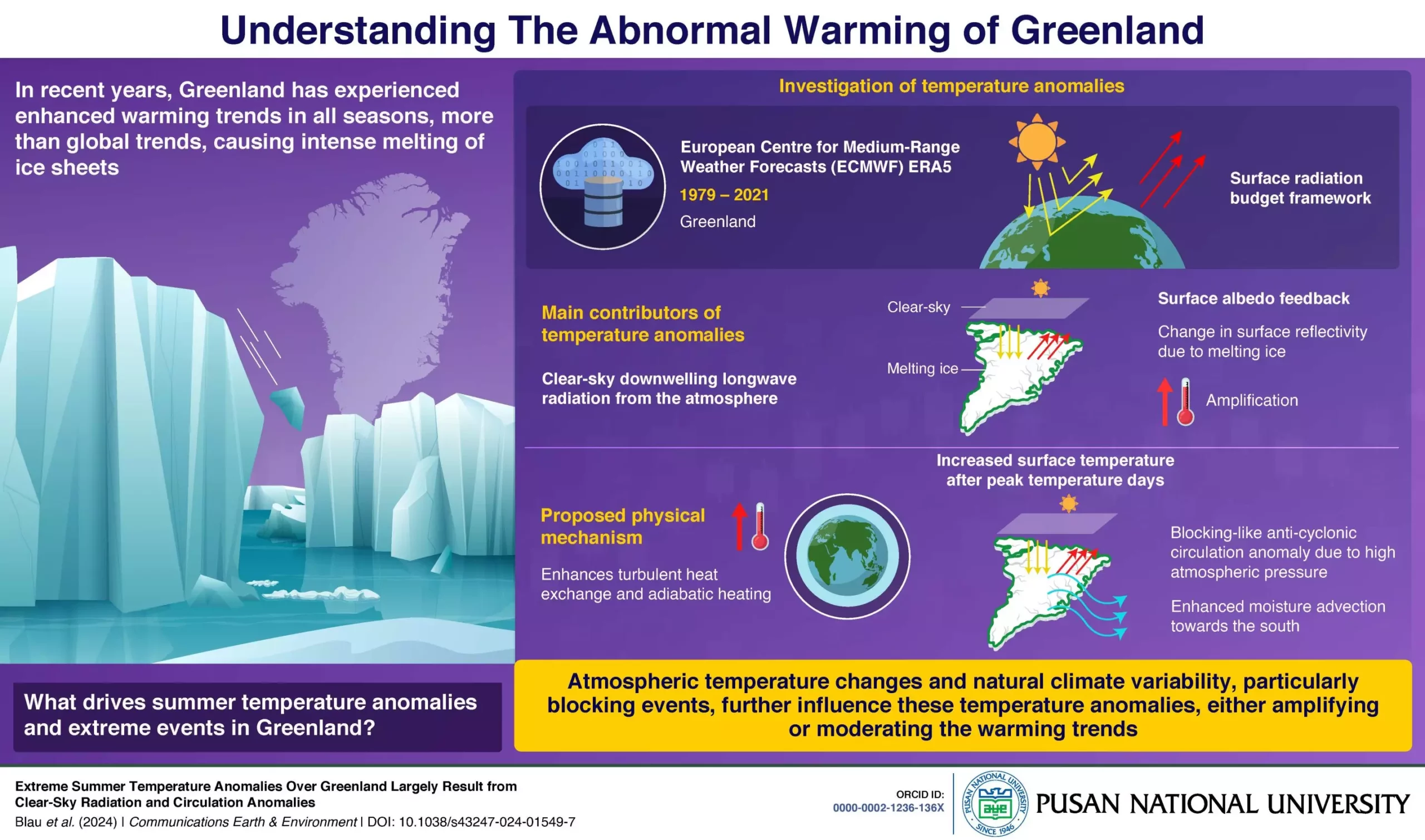As global warming continues to wreak havoc on our planet, Greenland stands out as one of the frontlines experiencing accelerated warming trends. The Arctic Amplification phenomenon has intensified the warming in northern regions, including Greenland, posing a significant threat to our planet’s ecosystems and coastal areas. The repercussions of this rapid warming extend far beyond the Arctic, with potential sea level rise looming ominously on the horizon.
Numerous factors have been identified as drivers behind the Arctic Amplification phenomenon, ranging from local climate feedback processes to energy transport from the south. One crucial aspect that exacerbates this warming trend is the melting of sea ice during summers, leading to a reduction in surface albedo and, consequently, increased heat absorption. The Greenland blocking index, a climate mode indicative of high-pressure blocking conditions over Greenland, has also been linked to temperature trends in the region. However, previous studies have often glossed over the specific causes of extreme year-to-year temperature events, necessitating a more in-depth analysis of this complex issue.
A group of researchers led by Professor Kyung-Ja Ha from Pusan National University delved into the anomalous warming trends in Greenland from 1979 to 2021, shedding light on the intricate mechanisms driving these extreme temperature events. By focusing on year-to-year perturbations in the surface energy budget, the researchers uncovered striking insights into the factors contributing to Greenland’s alarming warming rates. Their study, published in the journal Communications Earth & Environment, revealed that clear-sky downwelling longwave radiation and surface albedo feedback played a pivotal role in driving Greenland’s surface warming.
The Role of Atmospheric Dynamics in Greenland’s Warming Trends
The researchers identified a significant increase in clear-sky downwelling longwave radiation, primarily attributed to a rise in atmospheric temperature. In warm years, the heightened surface temperatures and tropospheric warming facilitated turbulent heat exchange between the atmosphere and the surface. This process, combined with enhanced moisture transport from the south, fueled the formation of a persistent high-pressure system over Greenland, perpetuating warm conditions and intensifying ice melting. The interplay of these atmospheric dynamics created a feedback loop, amplifying the warming effects and hastening Greenland’s ice sheet degradation.
Natural climate variability, particularly related to the blocking index, can either amplify or moderate Greenland’s warming trends, influencing the occurrence of extreme temperature events. Professor Ha emphasized the importance of considering these natural fluctuations in understanding the atmospheric anomalies leading to extreme summers over Greenland. As climate change continues to escalate, the extreme summer temperatures in Greenland are projected to accelerate ice sheet melting, ultimately contributing to rapid sea level rise.
By unraveling the drivers behind Greenland’s extreme summer temperatures, this research provides critical insights that could aid in predicting the future trajectory of the Greenland ice sheet. Understanding these complex interactions is paramount in developing strategies to mitigate further degradation and safeguard our planet’s fragile ecosystems. As we confront the escalating impacts of global warming, unraveling the mysteries behind Greenland’s accelerated warming trends is essential for shaping a more sustainable future.

